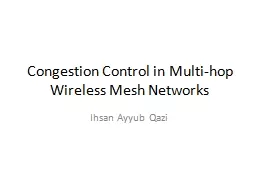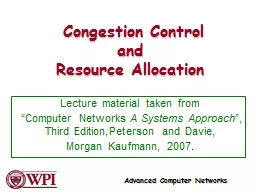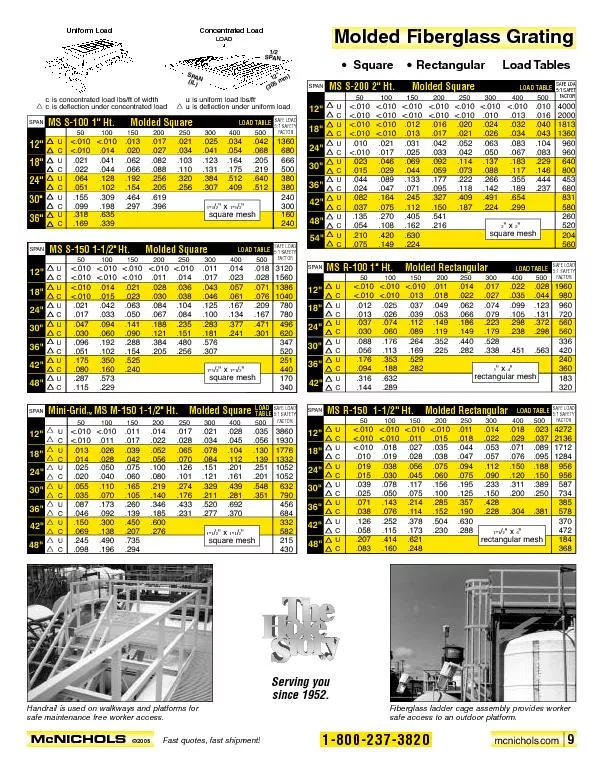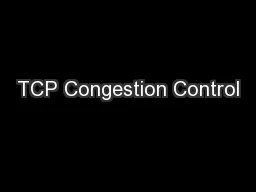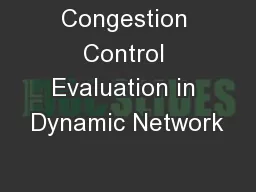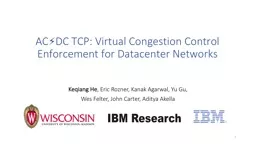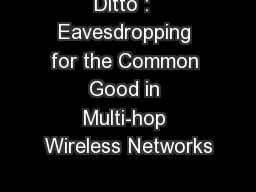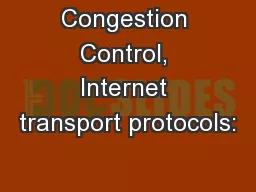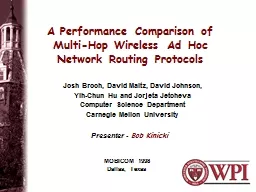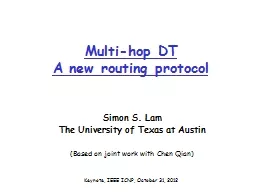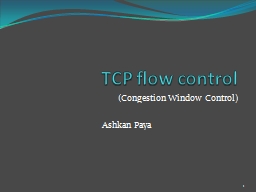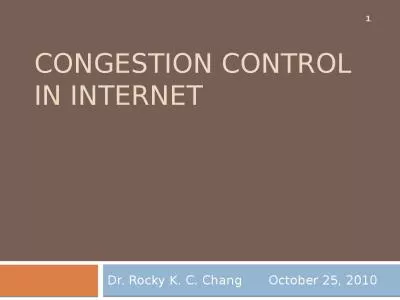PPT-Congestion Control in Multi-hop Wireless Mesh Networks
Author : karlyn-bohler | Published Date : 2016-05-06
Ihsan Ayyub Qazi Background Congestion Control What is congestion A network state where the arrival rate exceeds the service rate Throughput starts decreasing due
Presentation Embed Code
Download Presentation
Download Presentation The PPT/PDF document "Congestion Control in Multi-hop Wireless..." is the property of its rightful owner. Permission is granted to download and print the materials on this website for personal, non-commercial use only, and to display it on your personal computer provided you do not modify the materials and that you retain all copyright notices contained in the materials. By downloading content from our website, you accept the terms of this agreement.
Congestion Control in Multi-hop Wireless Mesh Networks: Transcript
Download Rules Of Document
"Congestion Control in Multi-hop Wireless Mesh Networks"The content belongs to its owner. You may download and print it for personal use, without modification, and keep all copyright notices. By downloading, you agree to these terms.
Related Documents

